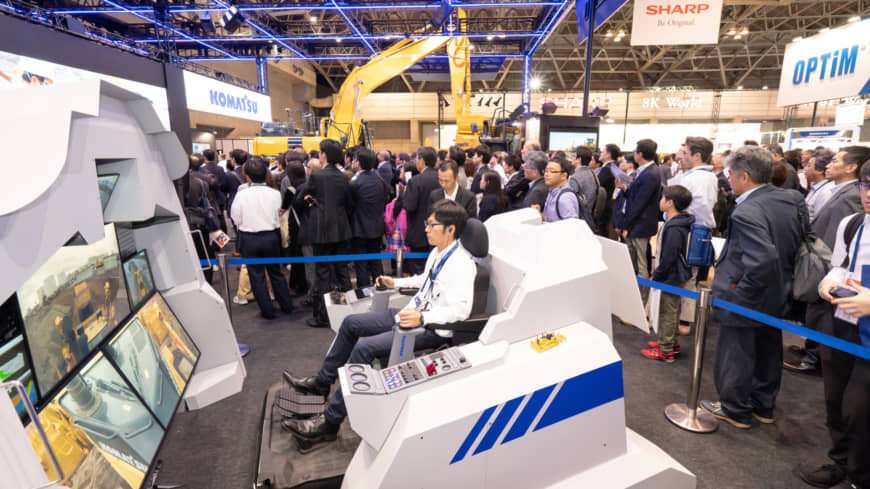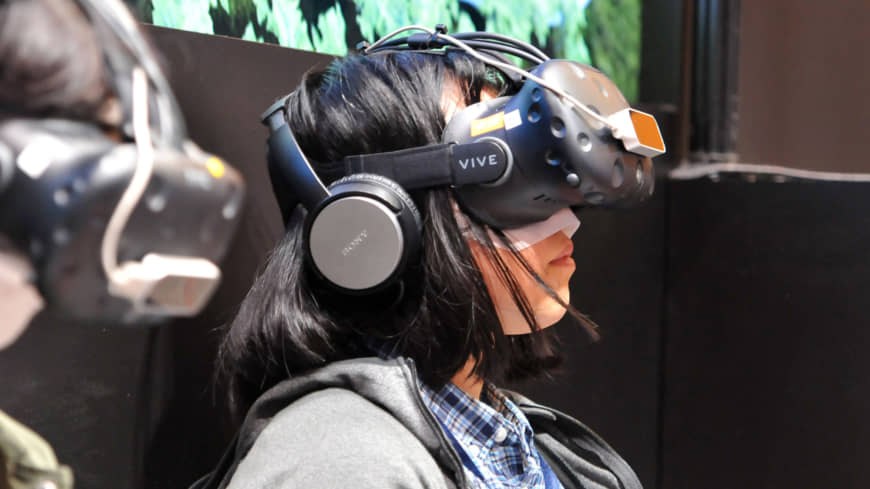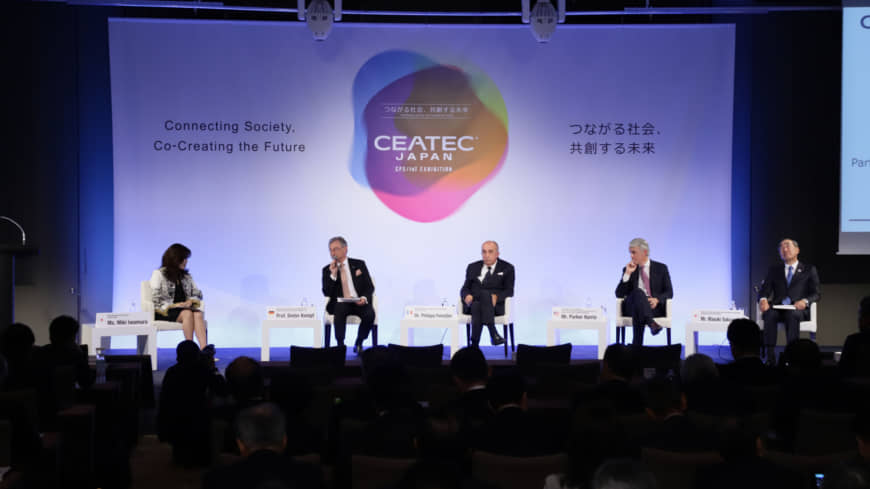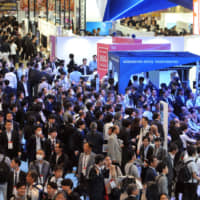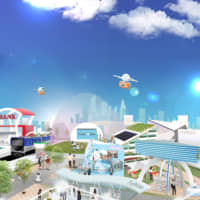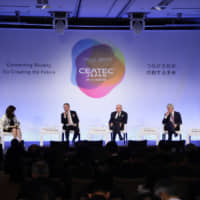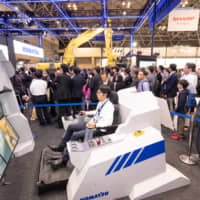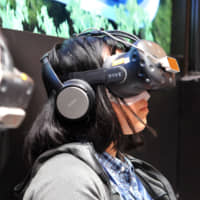This year’s CEATEC (Combined Exhibition of Advanced Technologies) will be held in Makuhari Messe in Chiba Prefecture from Oct. 15 to 18.
Registration and reservations for conferences will start in early August on the CEATEC website, www.ceatec.com.
The event is sponsored by the CEATEC Executive Board, comprised of the Japan Electronics and Information Technology Industries Association, the Communications and Information Network Association of Japan and the Computer Software Association of Japan.
With origins as an IT and electronics show when it started back in 2000, CEATEC now includes all industries and business categories that create or make use of advanced technologies such as CPS (cyber-physical system), the “internet of things” (IoT), robots and artificial intelligence (AI).
In addition to a large exhibition area where booths will showcase products, solutions and services of participating companies and organizations, there are two planned exhibits — “Society 5.0 Town,” a future town mainly co-developed by various service sector businesses, and “Co-creation Park,” which is for startups, universities and educational institutions, as well as overseas organizations such as foreign embassies.
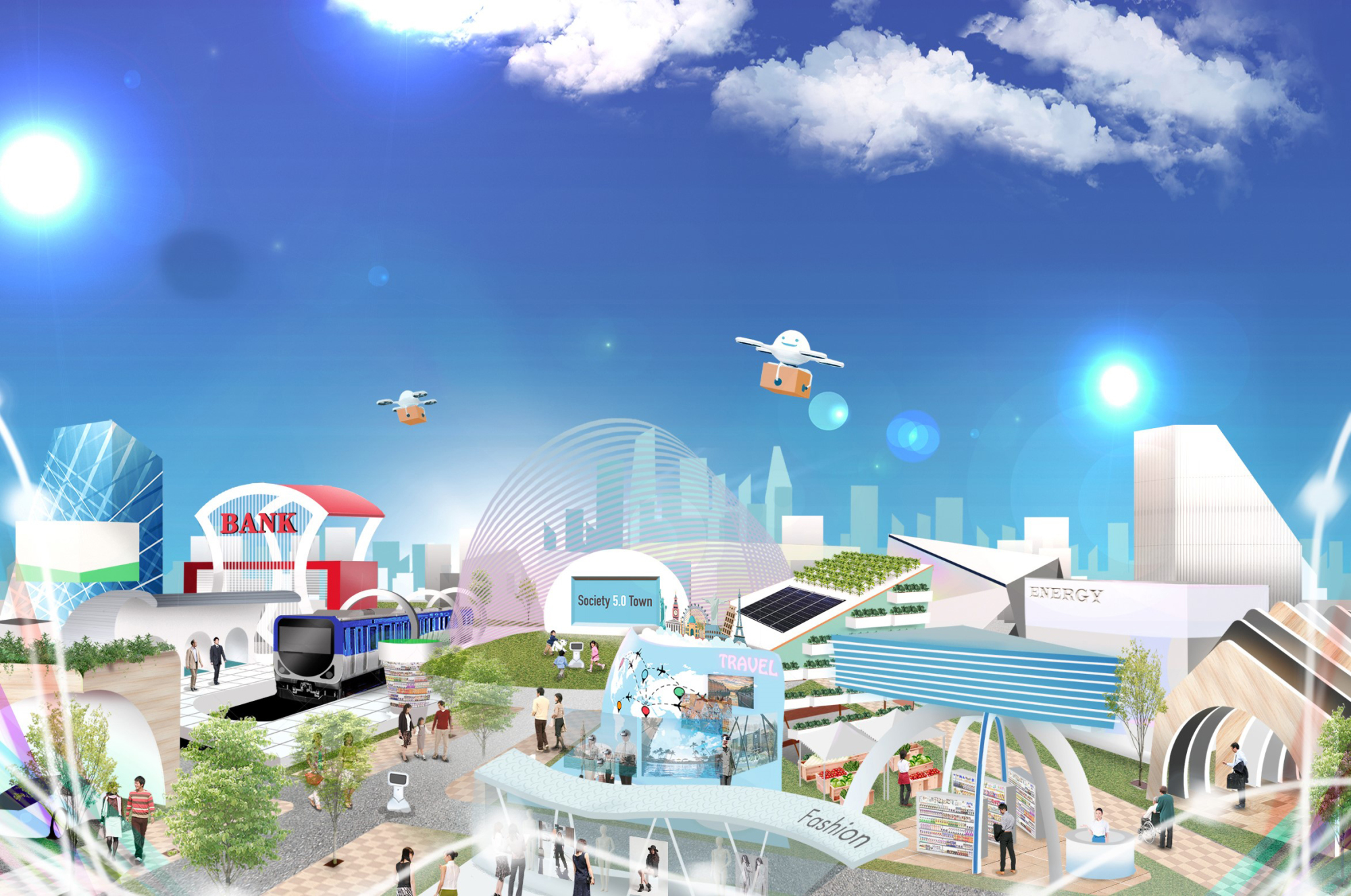
This year marks CEATEC’s 20th anniversary, but during an interview with The Japan Times, Kiyoshi Shikano, the executive producer of CEATEC, revealed the board decided not to use the word “anniversary” in CEATEC’s logo.
“We merely put ’20th’ without ‘anniversary’ because we only look to the future. Instead, we added copy that says ‘Toward Society 5.0’ to express where we are headed to,” he said.
Society 5.0 is a concept proposed by the Cabinet Office of Japan that describes a super-smart society where innovations and technologies, making the most of artificial intelligence and robots, are incorporated to create solutions to various issues. This concept will also be one of the key features to be shared among participants at the upcoming G20 Summit in Osaka in June.
Although everything and everyone is connected via the internet nowadays, the most important factor is how the data in cyberspace can relate to what is happening in the real and physical environments where people live and work. “Working on this part is the first step toward (realizing) Society 5.0,” said Shikano.
“It requires not just one but diverse industries to realize a super-smart society. It is becoming harder for companies to stand alone and still survive, too,” he later added. That is why companies from various industries flock to CEATEC and collaborate with each other to showcase what society may look like in 10 years from now.
Last year, 725 companies exhibited at CEATEC, 345 of which participated for the first time. The number of exhibitors has increased every year since 2015 (531 exhibitors), the year when the exhibition hit bottom because of the changing needs of participants and a globally competitive landscape.
“We made a major shift in 2016 from an exhibition focusing on IT and electronics to one that centers around CPS and IoT,” said Shikano. This transformation brought about success in attracting companies and individuals who were hungry for more than just new products.
The main exhibition area where most companies set up their booths is divided into three sections. “Total Solutions” is for products and solutions that are designed to help diverse industries to collectively realize Society 5.0; “Smart X” is for innovations that will cause revolutionary changes in a specific industry; and “Devices & Technologies” is for showcasing electronic components, devices, software and other technologies that support the creation of Society 5.0.
While the main area consists of independent booths, a planned exhibit, Society 5.0 Town, is made up of companies from diverse sectors such as banking, construction, logistics, retail, transport and entertainment, as well as local governments. The idea takes last year’s IoT Town, themed around “experiencing and disseminating the future,” a step further. This was through the expectation that Society 5.0 Town functions more like a society where each business sector connects to the other, improving the efficiency and convenience of people’s lives.
“As soon as the exhibitors of Society 5.0 Town are confirmed, we will invite all of them to a roundtable meeting,” said Shikano. In the meeting, the exhibitors, each from different industries, will discuss and decide what and how things will be displayed to offer visitors a holistic and continuous experience of a future town.
“CEATEC is one of a kind in that regard. It is not just a trade fair where companies are only interested in selling their own products,” he said. Shikano went on to say that what is important is not the technologies themselves, but how different industries can use these technologies to collaboratively recreate society.
CEATEC also attracts younger generations. Last year, students accounted for about 5 percent of visitors. They visit the exhibition not only to learn about new technologies, but to also experience how such technologies may change their lives.
“Some universities incorporated the attendance of CEATEC conferences in their curriculum last year. We will continue to enhance programs designed for students,” said Shikano. He hopes that CEATEC contributes toward alleviating a shortage of human expertise in the field of IoT.
A total of 30,748 people attended 163 conference sessions last year. Shikano said that the board is eager to invite more speakers from non-IT and electronics industries and other countries to give speeches to promote and reflect the diversity of CEATEC.
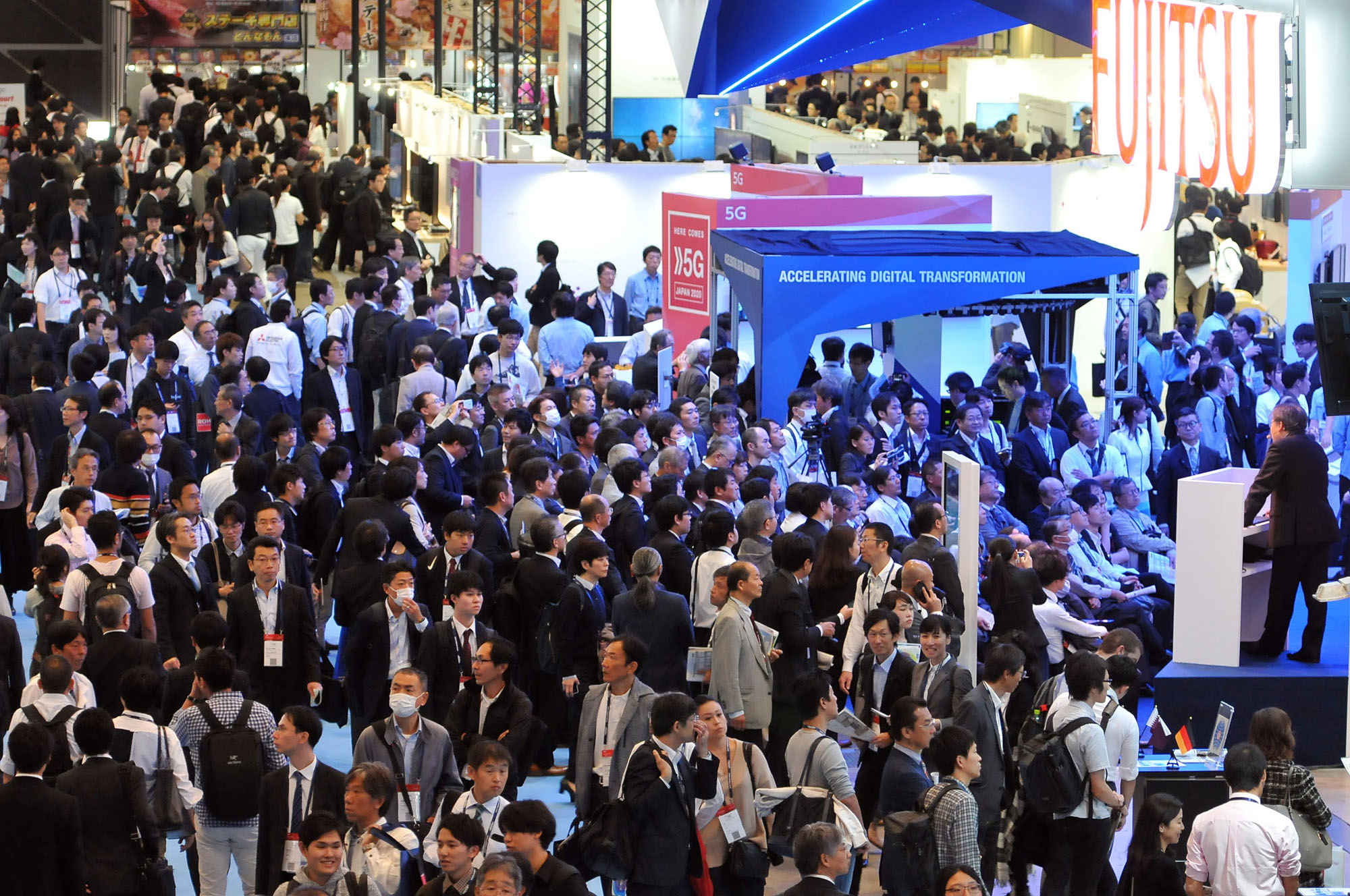
The number of visitors is increasing year by year, hitting 156,063 in 2018. CEATEC has the potential to be on par with CES, the world’s largest consumer electronics trade show. CES attracts more than 182,000 visitors every year.
“But we are not just concerned about the numbers. We are more concerned about who, and with what intention, comes to our exhibition,” said Shikano. To learn as much information as possible about attendees, the exhibition requires pre-registration from all visitors.
In addition to personal information for verification, CEATEC collects data such as a visitor’s industry type, occupation and position, and purpose of the visit through a questionnaire. The information is analyzed and distributed to exhibitors to aid their marketing efforts.
The CEATEC executive board is taking measures to boost the number of overseas attendees. CEATEC’s exhibition dates have been shifted from the first to the third week of October as of last year, taking into consideration that Unity Day in Germany and National Day in China fall during early October.
“We also changed the CEATEC logo from ‘CEATEC Japan’ to only ‘CEATEC’ this year, with our strong determination to make this exhibition more international,” Shikano said.
Changes will also apply to Co-creation Park, another of CEATEC’s planned exhibits. Previously, this area’s startup zone was divided into two parts, one for domestic startups and the other for international. This year, all participating companies will be randomly located, irrespective of their origin. Shikano hopes that this will inspire further communication and innovation among exhibitors.



